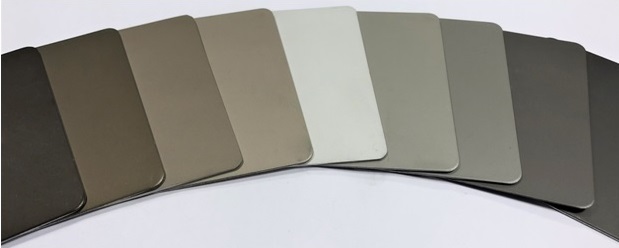Anodised Metal
Since the 1930’s, the anodising process has incorporated the electrochemical treatment of aluminium sheets, resulting in a uniquely decorative and durable coating.
Throughout this process, 5005 H34 aluminium has been recognised as one of the most suitable anodised aluminium sheets for exterior surfaces, due to its durability and resistance to the elements. Varying levels of purity in aluminium composition will influence the colour consistency of the final product, where all alloys must be prime billet – not remelt. More specifically, in order to obtain maximum colour consistency, all material should come from the same billet – while this is good in theory, it is almost impossible in practice.
If the project has varying panel widths, the panels will normally originate from different sheet sizes (billets) to minimise wastage. If panels are damaged and need to be replaced, they are likely to come from different billets (unless material has been set aside for this purpose).
Anodising is unlike any other finishing process in that it reveals the substrate of the aluminium during processing. For instance, the colour of the final product is influenced by the natural variation in the metallurgical metal structure. Despite attempts to control variables in the anodization process – such as the quality and grade of aluminium, and the chemicals, temperature, colour, and timing of the process itself – there are many factors which will alter the colour of the end product. Due to this stringent process, no two pieces of anodised metal will be exactly the same.
In summary, anodising is an excellent, hard-wearing, translucent coating with natural colour variations. If your project demands a consistent colour tone throughout the aluminium panels, the selection of an alternate finish – such as a Dulux Powder Coat – will allow for greater aesthetic control of the final product.

